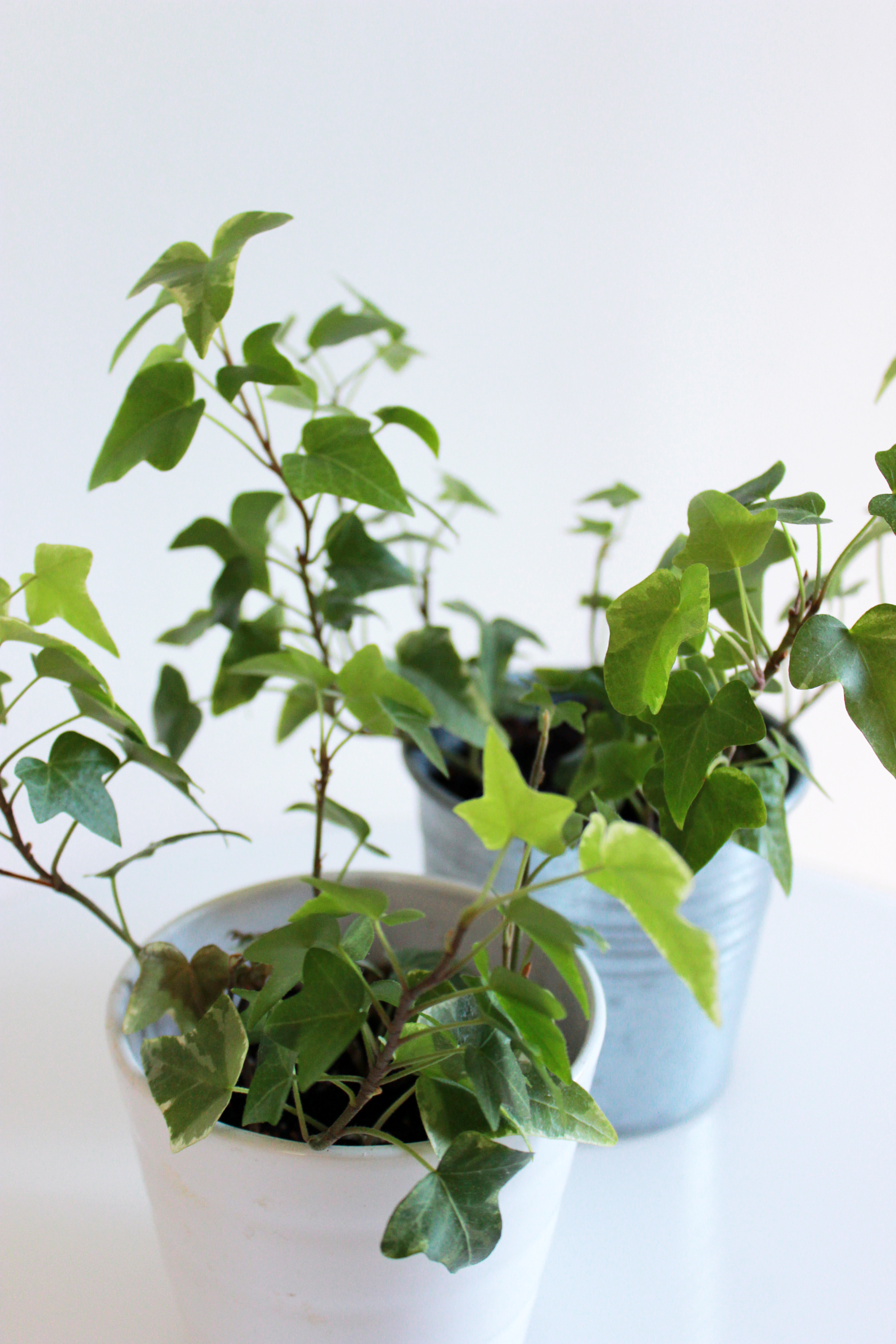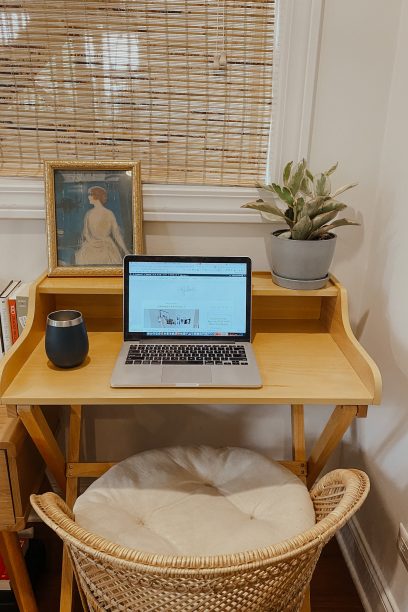
Happy Monday, friends!!
How was your weekend? We had the BEST weekend ever celebrating our 2nd wedding anniversary! (It’s actually today but we celebrated all weekend with a staycation at our favorite hotel, the Waldorf!) I’m very sad it’s over but also have so much to look forward to–we have our friends Andrew + Emily’s wedding this coming weekend, and then just a few days later, we leave for Spain! Eek! The countdown has begun!
Today, Kendall Is Back With Our Second “Am I Doing This Right?!” post:
If you missed our first post in the series, she recently came on board to help me with writing, editing, and finally making sense of my editorial calendar, and you’ll be seeing a lot more of her! ??This new series was all her idea, and I loved it immediately!
In “Am I Doing This Right?!” she picks one #adulting topic to cover each post. And today’s topic? PLANTS! So–let’s turn it over to Kendall, AKA, adorable plant lady. (I learned so much from her tips in this post–so get excited! Especially if you’re a regular plant murderer, like me.) ?
—
Hi guys!
Kendall here again–and I’m excited to talk about one of my favorite topics–PLANTS. Plants are something I could talk about foreverrr. ?
Let me start out by saying, I wasn’t always a crazy plant lady. I guess it started as a rolling obsession when I moved from Denver to Houston a few years ago. I love Denver, but something about the lush, tropical climate down South inspired me to bring the outdoors in and I’ve never looked back. (Seriously though, I even wrote on The Everygirl about why I decorated my 800 sq. ft. apartment with 60+ plants!)
I started small with an assortment of succulents and some hanging baskets of English ivy and worked my way up to fiddle-leaf fig trees, Monstera deliciosa and some big palms. After awhile I really got the hang of plant parenting and learned a lot about how to care for them, where to buy them and the best places to source pots and accessories. Don’t get me wrong — there was some trial and error involved at the beginning. (My biggest tip: I think most plants don’t survive because of overwatering. It’s always easier to add more water over time and much more difficult to come back from an overwatering fiasco).
Plants are especially nice for my fellow renter/apartment dwellers who don’t want to put a lot of money into their outdoor spaces. My apartment is all white with hardwood floors and I love the way greenery softens the space, adds charm and serves as decor that doesn’t feel like “stuff.” For example, a bookcase full of just books can look stuffy or cluttered, but incorporate a few plants and it feels lighter and more approachable!
Maybeee you don’t need quite as many plants as me, but adding a few to your space can really add to your decor, combat dry air and make you feel happier and healthier. That’s right — they can reduce both mental and physical stress and give you a mood boost. Can your other decor do that?! ?
A word of caution, if you’re a pet owner, make sure to check with your vet to ensure potential plant purchases are not toxic to animals, or make sure those plants are placed out of reach. Okay, let’s dive in!
7 Tips for Thriving Houseplants:
Do your research:
Seems simple, but it’s important to take the time after buying a new plant you’re unfamiliar with to read up on its likes and dislikes. Which light conditions and water schedule is best? This will probably determine where you place it in your home. And which conditions can it still thrive in? Should the soil always be damp or should it dry out in between waterings?
Water on a schedule:
I water all of my plants at the same time once each week. Some may prefer to be watered more than that, but houseplants can adjust and everyone seems to be ok with this method now — ha! This way, a) I don’t forget in general and b) make sure no one plant gets left behind. Then, I like to throw on a podcast or music and spend 20 minutes watering everything. I just adjust the amount of water each plant gets based on what it likes. I use this watering can (it’s so pretty!) and this mister bottle for succulents and cacti (I only mist these guys, never water).
Be observant:
Your plants will let you know if something isn’t right — you just have to pay attention. Always check the soil before watering to make sure it’s dry, damp, etc. Look for brown, wilting or yellow leaves — or note any leaves that have fallen. If something looks wrong, try changing one variable at a time. i.e. increase water or move to a sunnier spot, then watch to see if the plant improves or gets worse before changing something else. Here’s what your plants are trying to tell you with their leaf color:
Brown leaves:
You may notice the tips of your plant’s leaves turn brown, which is very common in houseplants. It signals plant stress and the reason can be a number factors: too little humidity (especially in winter), temperature shock (they might be too hot if placed in direct sunlight for most of the day or alternatively, they could be too close to a draft or doorway in the winter,) or problems relating to its watering schedule. You can (and should!) cut the brown tips off your plants, but leave a little bit of brown on each leaf to avoid too much stress on the plant. Then, determine what you think the reason is (move its position, check its drainage or potentially repot it with new soil), and monitor the plant to see if any more brown tips appear.
Yellow leaves:
Usually, yellow leaves are due to moisture stress, which can result from both over or under watering. If one of your plants’ leaves turns yellow, check the soil to determine if you need to increase water or allow the soil to dry out before watering next. Also, check to ensure it’s draining properly and that there isn’t standing water in the saucer.
*For my plants, I find brown tips mean I’m underwatering and yellow leaves mean I’m overwatering.
Propagate or trim:
Propagating a plant involves cutting a clipping, placing it in water until it sprouts roots and planting it back in fresh soil to create another plant. Essentially, plant breeding! Buying plants that can be propagated is a cost-effective way to multiply your plant game. And propagating, trimming or pruning plants (to your desired aesthetic), helps keep the plant healthy (if it’s tipping over or getting too long). I propagate my plants when 1) I feel like creating a new plant or 2) the plant is getting too unruly or long for it’s spot. It’s time to prune a plant if it has dead or dying leaves. Simply cut or pull off the entire leaf so the plant can spend its energy on healthier leaves. Trim a plant if it’s starting to grow extremely lopsided or has a rogue string that’s growing much faster than the rest of the plant.

**example of various stages of English Ivy propagating (this all came from one small cutting.)
Dust leaves and rotate:
Lastly, make sure to dust your plants’ leaves! Sounds kinda weird, I know, but when leaves are covered in dust, the plant isn’t absorbing as much sunlight. I just wet a paper towel to dust leaves — this is especially important for plant’s with larger leaves, like fiddle-leaf figs. When I do dust, I like to rotate the plant too, to balance the sun exposure and ensure they don’t lean too far to the side facing the sun.
My top 5 plants that are hard to kill:
I don’t think anyone should be scared of a specific plant, and it’s so fun to experiment with new and different types, but I’ve rounded up my top 5 plant picks that are very hard to kill for those who have had bad luck with houseplants in the past. These guys are either extremely resilient, low-maintenance or don’t require a lot of sun (or all of the above!)

1. Snake plant:
(Also referred to as mother-in-law’s tongue, which gives you a sense of how tough it is). ? These guys are easily my #1 for a reason. I have 5 and have never once had a problem with them. They can endure droughts (for those who forget to water), and they can withstand a variety of light conditions (for those who forget to open the blinds or draw the shades).
Pro tip: these guys are great for bedrooms! They release oxygen at night and absorb loads of hazardous chemicals, to help you sleep better. I have one on each nightstand, which also makes a nice, uniform statement! And I water mine a little bit once a week and make sure they dry out between waterings. I have snake plants in high and low light conditions — they thrive in both!

2. English Ivy:
I’ve actually created a variety of ivy plants from the one small English Ivy I purchased. They grow fast and can be propagated to create additional plants. A highly purifying plant, English ivy looks great flowing from a hanging basket (I have one above my kitchen sink and another hanging in the bathroom). I give them all a fair amount of water once a week and have them in high/moderate light.

3. Cactus:
This might be a controversial plant to include in the lineup, because it does require some sun, but, it needs so. little. water! As in, I don’t water it. I simply mist it once a week. I find misting succulents and cacti is the best way to avoid accidentally overwatering them.
Place cacti in the sunniest part of your home and rotate them every so often so the plant receives even sunlight. You can buy cacti in a variety of sizes, which is great if you’re looking for a larger plant and don’t have the patience to wait for it to grow at home. ?

4. Monstera deliciosa:
(also known as the Swiss cheese plant because its leaves have beautiful holes in them). This is actually my newest plant and I love it! After watering, you can see the plant “cry” or “sweat” out the excess water through its leaves. Kinda cool! This plant might be an acquired taste aesthetically, but I think they’re so beautiful! Their leaves are really unique, they grow quickly — and can get quite large! I give mine a good soak once a week and keep it in indirect sunlight.

5. Golden Pothos:
This is a great plant for low light conditions and for hanging pots/shelves because they grow long. They’re a really pretty shade of green/yellow! I have a row of them on a high shelf with low light in my kitchen, and I love the way they cascade down. I water them all a fair amount once a week and propagate them every 3-4 months.
Accessorize your plants:

Lastly, the texture and color of your plant’s pots and other accessories are really important! After all, you have to look at them every day just like a piece of furniture. I love to buy vases/planters on my travels (serves as a fun statement piece as well as a trip souvenir,) but I’ve also scored great finds at Urban Outfitters (how pretty is this bistro rattan planter??), West Elm (they have beautiful midcentury modern planters), World Market (love their terrariums), and my go-to affordable option is Ikea! I love their simple pots (especially for bigger plants).
There are options for every decorating style! Here’s what’s currently on my wishlist:




